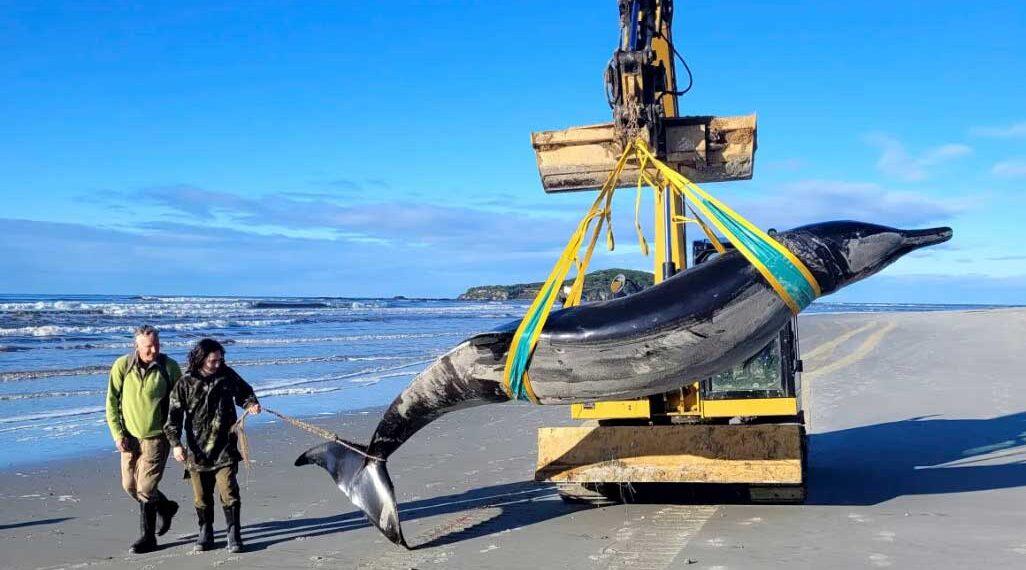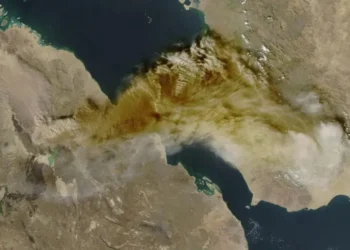Discovering the World’s Rarest Whale: A Rare Opportunity to Unlock Nature’s Secrets
In a groundbreaking moment for marine science, Anton van Helden, a senior marine science adviser with New Zealand’s Department of Conservation (DOC), identified a spade-toothed whale — the rarest whale species in the world — from a photo sent to him in July. This extraordinary discovery, sparked while van Helden was recovering from surgery, has set the stage for unprecedented research on a species so elusive it has never been observed alive at sea.
A Near-Mythical Creature
The spade-toothed whale is one of the rarest and most enigmatic members of the beaked whale family, known for their dolphin-like snouts and deep-ocean lifestyles. Only seven specimens have ever been recorded. This whale’s existence was first hinted at in 1874, through a lower jaw and teeth found on Pitt Island, about 500 miles off New Zealand’s coast. Subsequent discoveries of partial skulls in New Zealand and Chile confirmed the species. However, the first complete bodies were only documented in 2010, when a mother and calf were stranded on New Zealand’s North Island.
An Unprecedented Opportunity
In July, a spade-toothed whale washed ashore at the mouth of New Zealand’s Taiari River, presenting a rare chance to study this species. The local tribal authority, Te Rūnanga o Ōtākou, immediately recognized the significance of the event. They named the whale Ōnumia, after the traditional name of the area, and preserved it for dissection. “For our tribe in particular, whales are highly revered animals,” said Tumai Cassidy, cultural advisor for Te Rūnanga o Ōtākou. The dissection became a collaborative effort between the DOC and the local Māori community, blending scientific inquiry with cultural respect.
Unlocking the Whale’s Secrets
The 16-foot, 3,000-pound whale underwent meticulous examination by some of the world’s leading whale scientists. Starting with external measurements and blubber analysis, researchers worked to uncover insights into the whale’s adaptations for life in extreme ocean depths. The spade-toothed whale is part of a family renowned for its extraordinary diving capabilities; one relative, the goose-beaked whale, holds the world record for the deepest and longest dive.
“These are extreme animals,” said van Helden. “They’ve got all sorts of adaptations for that remarkable environment.” The team planned to use CT scans to study the whale’s skull and investigate how it produces sound in the deep sea, an area of particular interest given the species’ elusive nature.
A Robust and Powerful Creature
Up close, the spade-toothed whale surprised even seasoned researchers. “It’s a really stocky, powerful-looking little animal,” van Helden observed, noting its shorter, more compact frame compared to other beaked whales. This robustness likely plays a role in its survival in the challenging depths of the ocean.
A Holistic Approach
The dissection was not just a scientific endeavor but also a cultural milestone. “For our people, we are really open and are wanting to have collaboration, cooperation, partnerships,” Cassidy explained. This partnership underscored a shared responsibility to protect marine life and foster greater understanding of these incredible creatures.
As each layer of the whale’s anatomy is revealed, researchers gain precious insights into a species shrouded in mystery. The spade-toothed whale remains a symbol of nature’s vast, uncharted wonders, and this discovery marks a significant step in unlocking its secrets.
This article was rewritten by JournosNews.com based on verified reporting from trusted sources. The content has been independently reviewed, fact-checked, and edited for accuracy, neutrality, tone, and global readability in accordance with Google News and AdSense standards.
All opinions, quotes, or statements from contributors, experts, or sourced organizations do not necessarily reflect the views of JournosNews.com. JournosNews.com maintains full editorial independence from any external funders, sponsors, or organizations.
Stay informed with JournosNews.com — your trusted source for verified global reporting and in-depth analysis. Follow us on Google News, BlueSky, and X for real-time updates.














